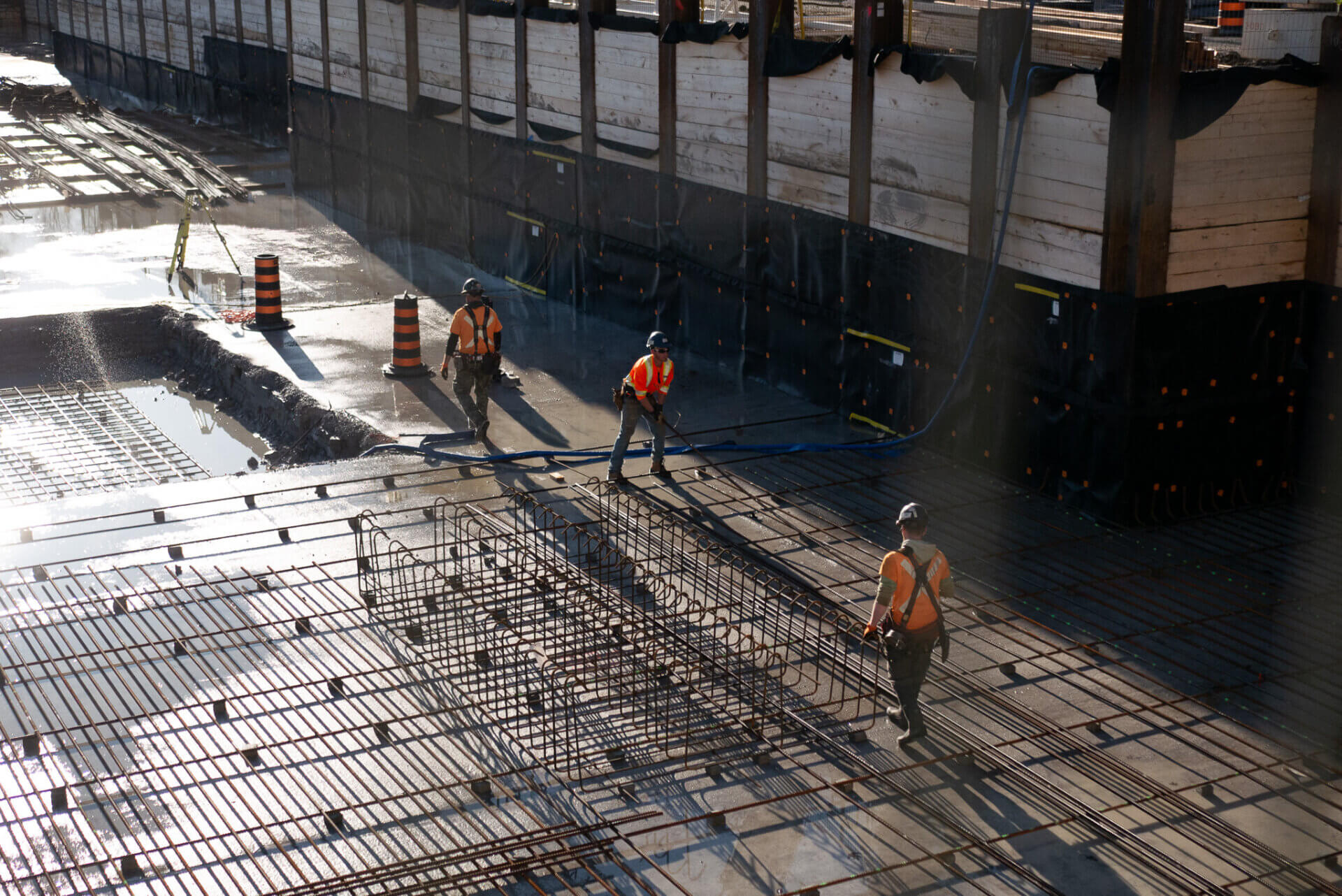What is the most dangerous industry? How do you measure the danger of an industry? Whether you focus on fatal injuries, death rate, or occurrences of non-fatal accidents, the construction industry ranks near or at the top. Year after year, the statistics collected nationally demonstrate that construction is riddled with risks to safety, with the highest number of deaths and injuries compared to other industries in the U.S.
Because government agencies and other interested organizations tend to assemble broad (and frankly overwhelming) tables of statistics, we’re here to eliminate some of that noisy data. This post will provide a focused snapshot of the state of safety in the construction industry, using the latest available numbers.
We’ll be looking at:
- Fatal injuries
- Non-fatal injuries
- The epidemic of substance abuse and suicide
- Common issues during safety inspections
- The cost of safety violations
- The benefit of safety programs
- The Importance of prioritizing construction safety
Fatal Injuries in the Construction Industry
- There are 1,069 fatal occupational injuries in the construction industry each year in the United States. (1)
- Construction deaths account for 19% of US worker deaths each year, the highest of any other industry. (1)
- More than 65% of construction deaths are caused by falls, being struck by an object, electrocution, and caught-in/-between incidents. (2)
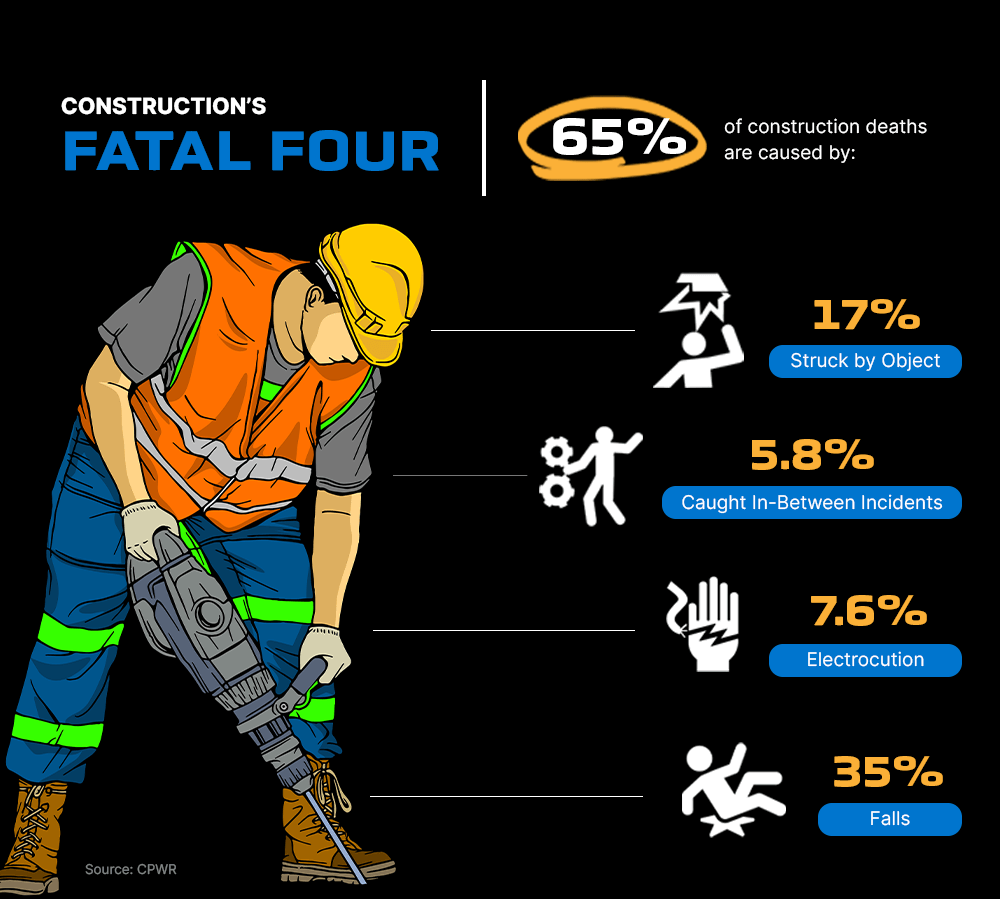
- Businesses with 1-10 workers account for 57% of fatal injuries (more than 70% of fatal falls) (2). Read more on this.
For more statistics related to falls in the construction industry, read “Working at Heights: 10 Must-See Construction Statistics“.
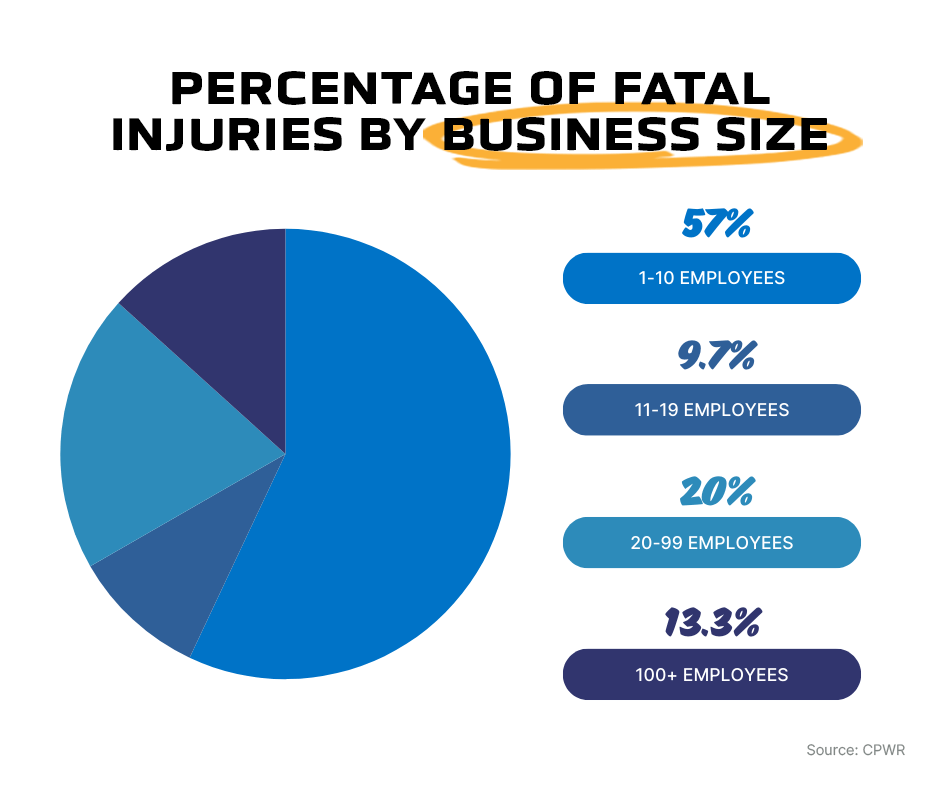
Non-Fatal Construction Injuries
- There were 169,600 non-fatal construction injuries and illnesses recorded in 2022, 42% of which resulted in days away from work.(3)
- The average number of days away from work due to illness or injury is 11 (4).
- The annual number of hours full-time workers were absent due to injury or illness was 24.2 million (2002)(6)
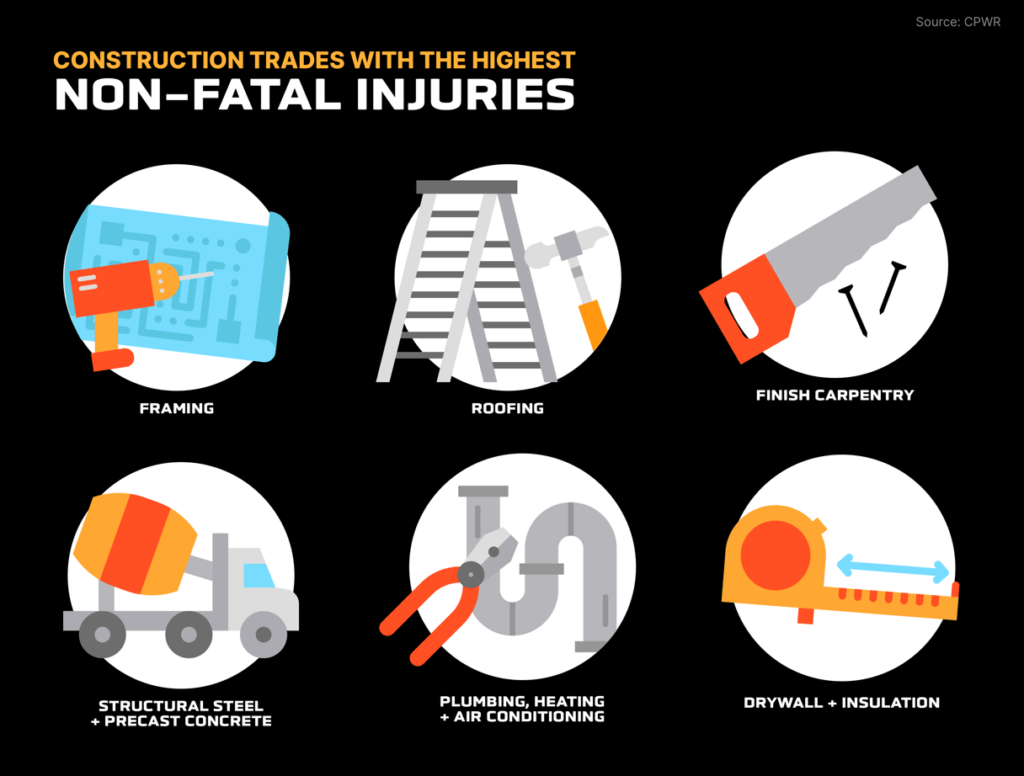
Suicide and Substance Abuse in Construction
- The suicide rate among male construction workers is 75% higher than the national average. (12)
- There is a 5:1 ratio of deaths by suicide to deaths from accidents among construction workers. (11)
- Construction trades and extraction workers have the highest rate of substance use disorders (19%) compared to other occupations. (13)
- Employers lose $8,591/year due to construction workers with untreated substance use disorders. (13)
- According to a recent Dodge Construction Network survey, 52% of those in the construction industry want to have more training on mental health, suicide, and opioid overdose. (11)
- Construction workers are six to seven times more likely to die of an overdose than workers in other professions (15)
To read more about the mental health crisis in the construction industry and what companies can do to combat it, check out the blog post “Mental Health in the Construction Industry (2024 Update).”
Safety Inspection Statistics
- From Oct 2022-Sept 2023, there were 28,778 total OSHA citations and 11,641 inspections for construction. (7)
- Small businesses with under 10 workers account for more than 75% of OSHA citations. (8)
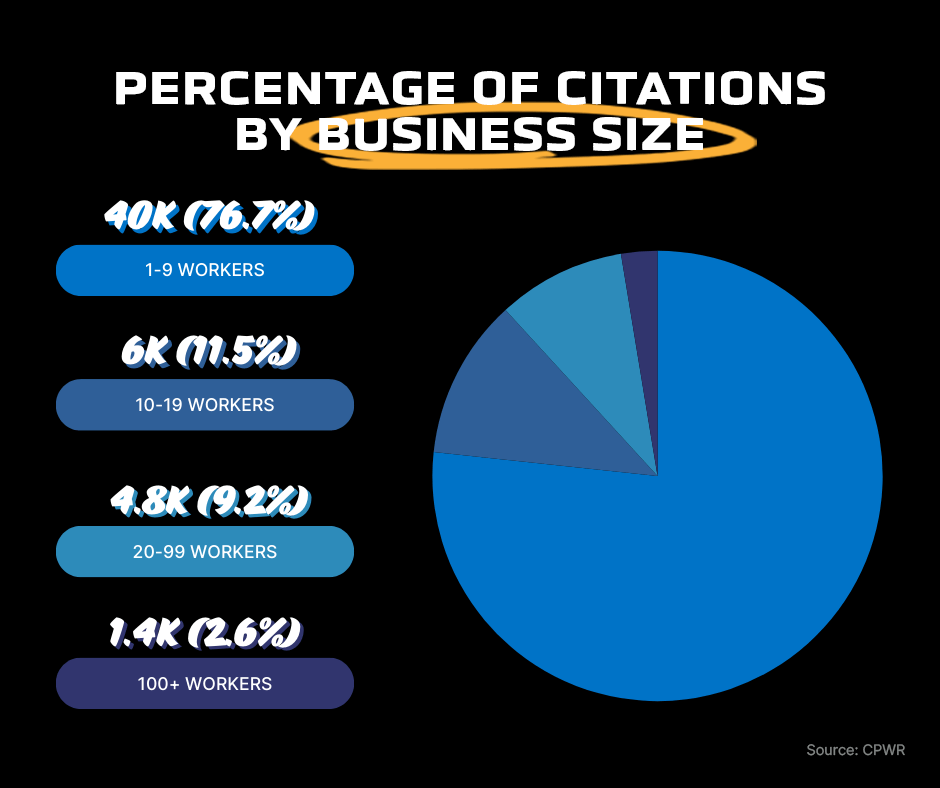
- The most common OSHA violations for construction are: Fall Protection, Ladders, Scaffolding, Fall Protection Training, and Eye and Face Protection. (9)
The Cost of Construction Safety Violations
- The total penalty paid by construction businesses from Oct 2022-Sept 2023 was $117,897,728. (7)
- The total cost of workers’ compensation claims in 2023 cost the US construction industry was $11.4B. (10)
The Benefit of Safety Programs
- A recent Dodge Construction Network study showed that 74% of respondents noted an increase in worker engagement with safety when a H&S plan was introduced before construction began. (11)
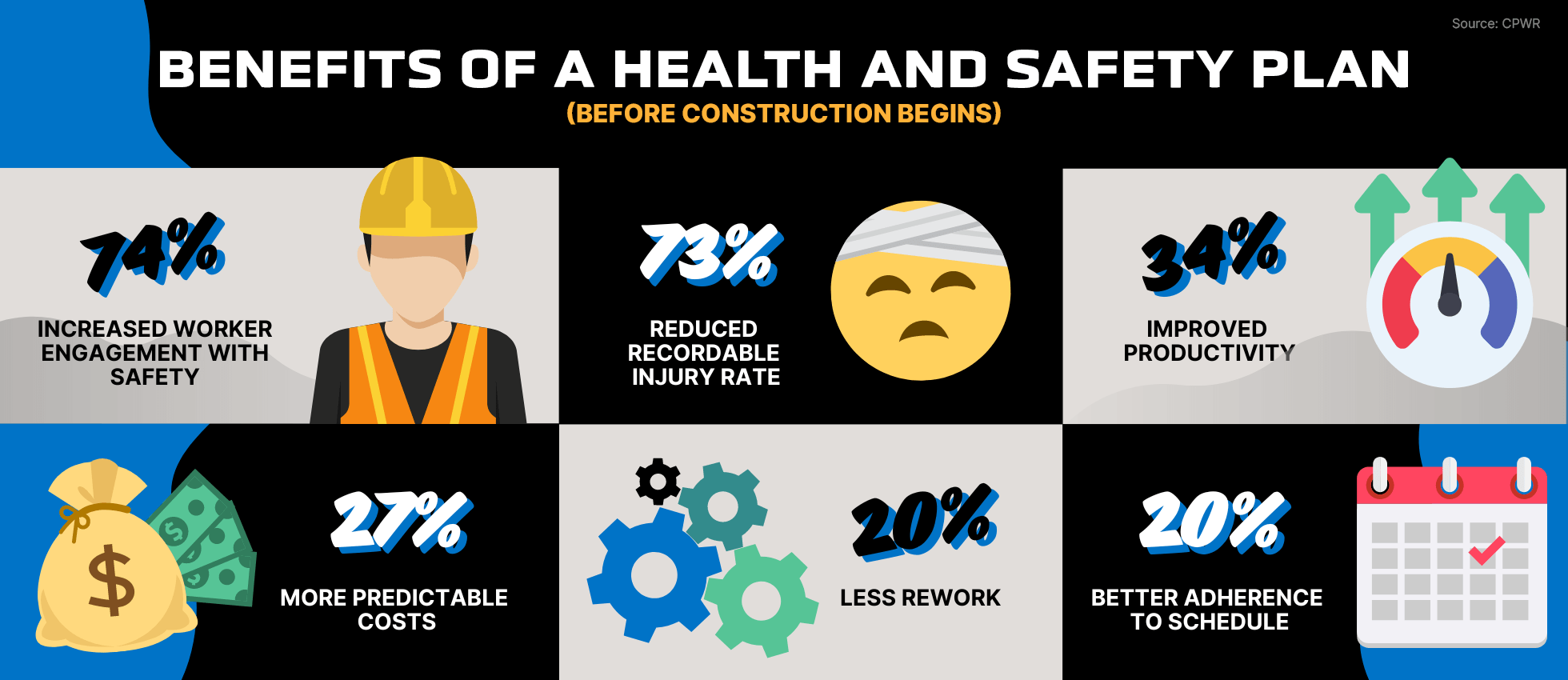
- Meeting OSHA requirements is the number one reason 44% of contractors plan for health and safety before construction begins. (11)
The Importance of Prioritizing Safety in Construction
The most recent available statistics paint a clear picture of the ongoing risks in the construction industry. With a significant portion of fatalities and injuries concentrated among small business employees, it’s clear that targeted interventions are needed to enhance safety protocols – especially in high-risk and highly cited and fined areas such as fall prevention.
By continuing to push for better safety practices and compliance with OSHA standards, the industry can work towards reducing these preventable deaths and injuries, ensuring a safer working environment for all construction workers.
Sources
- https://www.bls.gov/iif/fatal-injuries-tables/fatal-occupational-injuries-table-a-1-2022.htm
- https://www.cpwr.com/wp-content/uploads/DataBulletin-March2023.pdf
- https://www.bls.gov/iif/nonfatal-injuries-and-illnesses-tables/table-2-injury-and-illness-counts-by-industry-2022-national.htm
- https://injuryfacts.nsc.org/work/industry-incidence-rates/industry-profiles/
- https://www.bls.gov/web/osh/table-1-industry-rates-national.htm#soii_n17_as_t1.f.1
- BLS, Absences from work of employed full-time wage and salary workers by occupation and industry, 2023
- https://www.osha.gov/ords/imis/citedstandard.naics?p_esize=&p_state=FEFederal&p_naics=23
- https://www.cpwr.com/research/data-center/data-dashboards/osha-inspections-and-citations-in-construction-dashboard/
- https://www.osha.gov/top10citedstandards
- https://business.libertymutual.com/wp-content/uploads/2023/07/WSI_1002_2023.pdf
- https://www.construction.com/resource/safety-management-in-the-construction-industry-2023/
- https://www.cdc.gov/mmwr/volumes/72/wr/mm7250a2.htm
- https://www.nsc.org/getmedia/9dc908e1-041a-41c5-a607-c4cef2390973/substance-use-disorders-by-occupation.pdf
- https://www.statista.com/statistics/673172/mental-health-treatment-counseling-past-year-us-men/
- https://www.cpwr.com/wp-content/uploads/2020/06/Quarter4-QDR-2019.pdf
